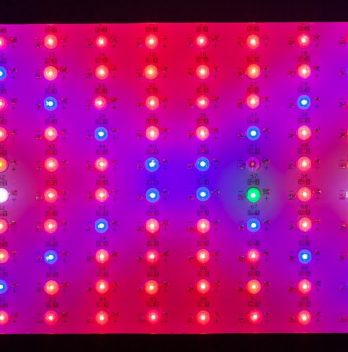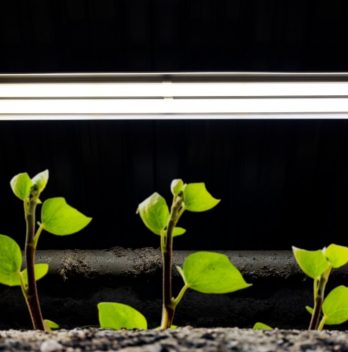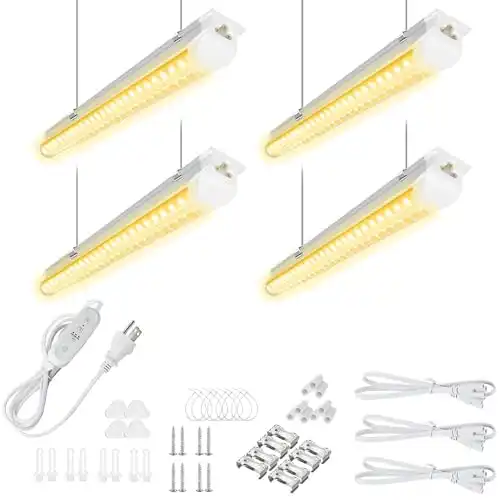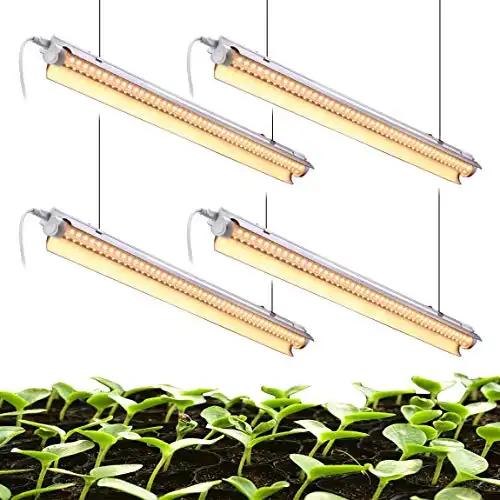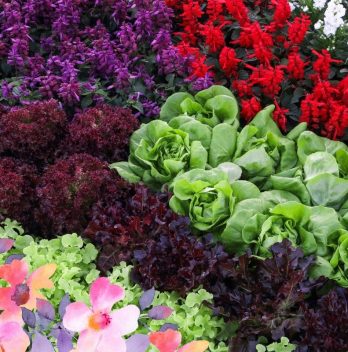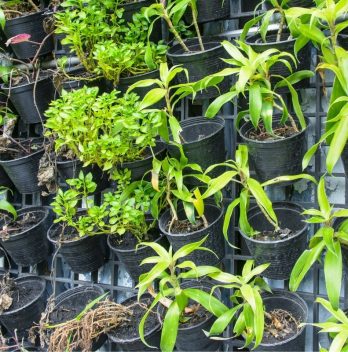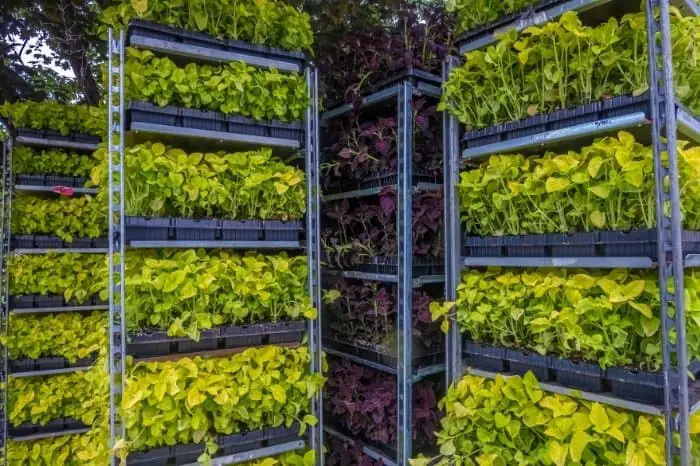Having an idea of the wattage used by your grow lights will tell you the grow light power consumption. This is important for you to determine the cost of operations. For example, you may be wondering how much 1000w grow light will cost per month. We will let you know in this post.
Almost every grower’s wish is to minimize cost and optimize yield. One of the deciding profit decisions when it comes to indoor gardening centers around the appropriate method of sun substitution. This is why it’s essential you know the wattage consumption so you can plan your running cost.
So, in this article, we will be looking at how much 1000w grow light will cost per month.
Wattage
Before we go into the power consumption of grow light, let’s look at what wattage (w) is. Wattage will determine the amount of power your grow light consumes. When the light wattage goes higher, it consumes more energy for electricity. Thus, you can have an idea of the running cost per month with wattage.
The amount of wattage consumption on your grow light will majorly depend on the type of grow light used. There are some grow lights made of high-pressure sodium (HPS) while some are made of light-emitting diode (LED). Note that HPS grow light will consume more power than LED grow lights.
Most grow light these days are made to replace the HPS consuming power light. So, a grow light labeled 1000w may not actually be consuming 1000w. It is only replacing a 1000w HPS bulb and thus will consume less wattage.
1000w Grow Light Cost Per Month
To determine the cost per month of 1000w LED grow light, you need to put some things into considerations. So, let’s take a look at them.
Things To Consider When Calculating How Much Do Grow Lights Cost
- How many hours per day will you be running your grow lights?
- What stage in the plant cycle does your plant fall? Is it in the seedlings stage, vegetative stage, flowering stage, or fruiting stage? Seedlings will require about 14 to 16 hours of grow light. For the Vegetative, flowering, and fruiting stage, we can say roughly 12 to 18 hours per day.
- What is the actual number of wattage your grow light draws from the wall? For example, if you have a 3000w grow light, the light may only draw about 700w from the wall. Also, the wattage the grow light emits is totally different from the wattage it will pull from the wall or consume.
Giixer 1000W LED Grow Light, Dual Switch & Dual Chips Full Spectrum
- The number of weeks each growth stage will take. For example, seedlings can take 1 to 2 weeks. The vegetative and flowering stages can take weeks. But in this article, we will be doing 4 weeks, which is one month.
- Electricity cost per kWh (kilowatt-hour). In the United States, the average cost of kWh is around 13 cents. However, this energy rate can differ widely depending on the states you live in. It could be cheaper or more expensive.
Here You Can Find Out A List of Quality but Cheapest LED Grow Lights Online
Calculating 1000w Grow Light Price Per Month
So for example, you run your 1000w LED grow light for 15 hours per day. Remember we said you need to find out the actual number of wattage consumed. Dig and read through your grow light label to find out the actual wattage specs.
For example, let’s say a grow light labeled 1000w actual wattage consumption number is 200w; we will have our total grow light cost per month to be $1170. This is calculated using 1kWh for 13 cents. This implies that the number of wattages consumed per day is 3kWh. While the number of wattage used per month equals 27kWh from running 15 hours grow light per day.

This is just an estimate of running 15 hours grow light daily with an actual wattage consumption of 200w. This may vary depending on some things such as the actual wattage values or the number of hours you run your grow light.
However, if your light is actually consuming a 1000w and you’re running your grow light for 15 hours, the cost per month will be $5850. This is calculated using 1kWh for 13 cents. This shows that the number of wattages consumed per day is 15kWh. While the wattage number used per month is 105kWh from running 15 hours grow light per day.
You can use this grow light calculator by inputting your values here to get your monthly cost estimation.
FAQ’s
How many watts does a 1000 watt LED grow light use?
LED grow lights do not use any wattage. They are a type of light emitting diode, but they don’t have any filament or other heating element. They use an electric current to produce light, and they are designed to be used in conjunction with a fan to move air through them. The amount of light output is determined by the color temperature. Cooler light will provide more red/blue spectrum light and more plants will grow.
A 1000 watt Led grow light equals 900 watts of HPS light.
How many plants can a 1000 watt LED grow?
In general, 4 plants.
In general, 4 plants.
LED lights are the future of lighting. They’re incredibly energy-efficient and can last for years, even decades. If you’re considering purchasing some, you might be wondering how much they cost to run each month. You can find this information by simply dividing the cost of the light bulb by its expected lifetime, which is typically 20 years or more.
Do LED lights take a lot of electricity?
LEDs are very efficient, so it is unlikely that they use much more energy than incandescent bulbs. They do use a lot less power.
What are the disadvantages of LED lights?
LED lights are not only energy efficient, but they also last much longer than traditional bulbs. However, there are some disadvantages to using LED lights that you should be aware of before you buy. LEDs are extremely durable. They can last anywhere from 15-20 years, depending on the type and quality of bulb you purchase.
LEDs are more expensive than other lighting options, such as incandescent bulbs. For example, an average LED light bulb can cost around $40-$50, whereas a typical incandescent light bulb can cost under $1. Another disadvantage of LEDs is that they can be difficult to install. They require a very specific installation and cannot be used in many existing fixtures. If you have an existing fixture, you will have to remove it before installing the LED lights. What types of LEDs are there? There are three main types of LEDs: white, amber, and blue. White and amber lights are more common and are great for lighting up a space. They also tend to have more energy efficient bulbs, so they are perfect for home use.
Do LED lights get hot?
How many watts does a 1000 watt LED grow light use?
LED grow lights do not use any wattage. They are a type of light emitting diode, but they don’t have any filament or other heating element. They use an electric current to produce light, and they are designed to be used in conjunction with a fan to move air through them. The amount of light output is determined by the color temperature. Cooler light will provide more red/blue spectrum light and more plants will grow.
A 1000 watt Led grow light equals 900 of HPS light.
How many plants can a 1000 watt LED grow?
In general, 4 plants.
How much do LED lights cost per month?
LED lights are the future of lighting. They’re incredibly energy-efficient and can last for years, even decades. If you’re considering purchasing some, you might be wondering how much they cost to run each month. You can find this information by simply dividing the cost of the light bulb by its expected lifetime, which is typically 20 years or more.
Do LED lights take a lot of electricity?
LEDs are very efficient, so it is unlikely that they use much more energy than incandescent bulbs. They do use a lot less power.
What are the disadvantages of LED lights?
LED lights are not only energy efficient, but they also last much longer than traditional bulbs. However, there are some disadvantages to using LED lights that you should be aware of before you buy. LEDs are extremely durable. They can last anywhere from 15-20 years, depending on the type and quality of bulb you purchase.
LEDs are more expensive than other lighting options, such as incandescent bulbs. For example, an average LED light bulb can cost around $40-$50, whereas a typical incandescent light bulb can cost under $1. Another disadvantage of LEDs is that they can be difficult to install. They require a very specific installation and cannot be used in many existing fixtures. If you have an existing fixture, you will have to remove it before installing the LED lights. What types of LEDs are there? There are three main types of LEDs: white, amber, and blue. White and amber lights are more common and are great for lighting up a space. They also tend to have more energy efficient bulbs, so they are perfect for home use.
Do LED lights get hot?
They get hot, but not as much as the regular incandescent bulb probably because they’re more efficient.
Are LED brighter than halogen?
When it comes to comparing a LED bulb with a traditional incandescent, halogen or fluorescent, the answer is yes. The average LED bulb can produce up to 90 percent of the light as a comparably sized traditional bulb. However, they’re also much smaller and have longer life spans.
An LED (light emitting diode) is a semiconductor-based light source that converts electricity into light, whereas a CFL (compact fluorescent lamp) is a type of compact fluorescent light that produces light using the same principle as an incandescent bulb. LED bulbs are generally much smaller and have longer life spans than CFL bulbs. They also produce more light per watt of energy used. In other words, a LED bulb is brighter than a CFL bulb.
Led Grow Light Cost Per Month Final Word
How much wattage your grow light consumes matters when it comes to the planning cost of electricity. But the wish of most growers is to use a grow light that consumes less power and offers maximum output for optimal yield. So, you can achieve this by choosing the appropriate grow light.

Eunice is an enthusiastic gardener with a passion for growing beautiful flowers. She loves nothing more than spending time in her garden, tending to her plants and enjoying the outdoors. Eunice has been gardening for over 15 years and has developed a unique style of landscaping that is both practical and aesthetically pleasing. She is especially fond of growing roses and enjoys experimenting with different varieties and colors. Eunice takes great pride in her garden and often shares the fruits of her labor with friends and family. In her spare time, she enjoys reading gardening magazines and attending local horticulture events. Eunice is passionate about her hobby and is always eager to share her knowledge and experience with others.



